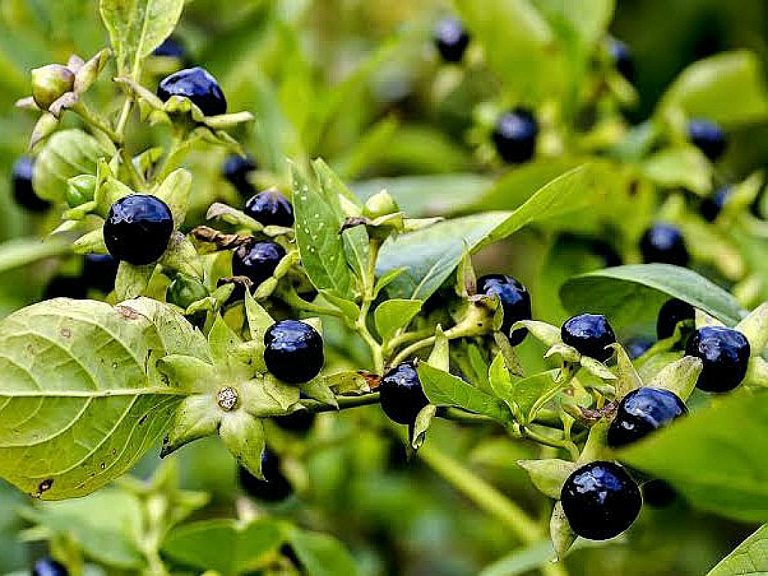Top 10 Most Dangerous Plants In The World

In the enchanting realm of nature, where vibrant flora paints the landscape with its alluring beauty, there exists a shadowy side concealed beneath the petals and leaves. This shadowy side is inhabited by a group of plants that, despite their captivating appearances, harbor a sinister secret – they are among the most deadly organisms on Earth. In this article, we embark on a journey to unravel the mysteries of the world's ten most dangerous plants, each one a botanical enigma waiting to be dissected.
From the bewitching allure of Deadly Nightshade (Atropa belladonna) to the treacherous temptation of Rosary Pea (Abrus precatorius), we delve into the depths of these vegetal adversaries, exploring their toxic compounds and the often devastating consequences of human interaction. These plants have earned their infamous reputations for causing hallucinations, paralysis, and even death, making them formidable adversaries in the natural world.
While many plants offer medicinal benefits, these ten botanical terrors serve as a stark reminder of the potential harm lurking amidst the greenery. Our exploration of their toxicity, historical significance, and the cautionary tales associated with them will not only shed light on their deadly attributes but also underline the importance of respecting the perilous potential of nature's most deceptively beautiful creations. Prepare to be both fascinated and horrified as we unlock the secrets of these ten perilous plants, revealing the darker side of the botanical world.
Top 10 most dangerous plants in the world
- Deadly Nightshade (Atropa belladonna)
- Tobacco (Nicotiana tabacum)
- Manchineel (Hippomane mancinella)
- Lily-Of-The-Valley (Convallaria majalis)
- Oleander (??Nerium oleander)
- Rosary Pea, or crab’s eye vine (Abrus precatorius)
- Cerbera odollam
- Hemlock water-dropwort (Oenanthe crocata)
- Monkshood, wolf’s bane, etc (Aconitum genus)
- Thornapples (Datura genus)
1. Deadly Nightshade (Atropa belladonna)

Deadly Nightshade is a highly toxic plant known for its glossy black berries. It contains tropane alkaloids, primarily atropine and scopolamine, which can cause hallucinations, seizures, and even death when ingested. Historically, it was used as a poison and in witchcraft.
Despite being one of the most toxic plants known, with as few as 10 berries thought able to kill an adult, its name actually comes from its use as a beauty product (bella donna being Italian for beautiful woman). Drops prepared from the plant were used to dilate pupils to make ladies’ eyes seem bigger, brighter and more attractive.
2. Tobacco (Nicotiana tabacum)

READ ALSO » Top 5 Most Visited Countries In The World
While tobacco is commonly associated with smoking, it is highly toxic in its pure form. Nicotine, its active compound, can be lethal in relatively small amounts. Ingestion or absorption of nicotine can lead to nausea, vomiting, convulsions, and, in severe cases, fatal respiratory paralysis.
Tobacco is designated as a cardiac poison and if eaten directly may even result in death. Indirectly, tobacco is still remarkably dangerous, responsible for the deaths of 8 million people a year according to the WHO, primarily as a consequence of cigarette smoking. It certainly deserves its place on our deadly list.
3. Manchineel (Hippomane mancinella)

Known as the "beach apple," the manchineel tree produces toxic milky sap and fruit. Even touching its leaves or standing under it during rain can cause severe skin blistering and eye irritation. Ingesting the fruit can be fatal.
Manchineel trees are found in tropical parts of the Americas, and it is known as ‘the world’s most dangerous tree’ for a good reason. Every part of the tree, from the bark to the sap is highly toxic.
4. Lily-Of-The-Valley (Convallaria majalis)

This innocently charming plant contains cardiac glycosides, which can disrupt heart rhythms when ingested. Symptoms include nausea, vomiting, and potentially fatal heart arrhythmias.
5. Oleander (Nerium oleander)

Oleander is one of the deadliest ornamental plants. It contains toxins called oleandrin and nerioside, affecting the heart and causing symptoms like nausea, arrhythmias, and death if ingested. It contains toxic cardiac glycosides. Somewhat fortunately, however, it has a very bitter taste, meaning that people are not tempted to eat it, and oleander poisonings are rare.
6. Rosary Pea (Abrus precatorius)

Rosary Pea seeds contain abrin, a potent toxin. Ingesting even a small amount can lead to organ failure and death, as there's no known antidote.
READ ALSO » Top 10 Most Powerful Guns In The World
Its toxicity is such that it has been even used for the illegal killing of cattle, using just a small spike coated in the seed paste.
7. Cerbera odollam

Also known as the "suicide tree," this plant contains cerberin, a cardiac glycoside similar to oleander. Ingestion can lead to severe heart issues and death.
Native to south and southeast Asia and Australia, this tree bears a highly toxic fruit called othalanga which when ingested can stop a heart. It has been used both for homicidal and suicidal purposes.
8. Hemlock Water-Dropwort (Oenanthe crocata)

Hemlock water-dropwort contains highly toxic oenanthotoxin. Consumption can result in seizures, respiratory failure, and death.
This plant is a member of the carrot family, and although is reported to have quite a pleasant taste, is definitely something that should not be put in a stew.
9. Monkshood (Aconitum genus)

Monkshood contains aconitine, a potent alkaloid. Ingestion causes symptoms like nausea, vomiting, and cardiac arrest, often proving fatal.
The toxin derived from these plants is called aconite and in several parts of the world, it has been used as an arrow poison to hunt ibex and bears for example.
10. Thornapples (Datura genus)

Thornapples contain tropane alkaloids, leading to hallucinations, delirium, and potentially fatal complications when ingested.
READ ALSO » Top 10 Most Powerful Cars In The World 2023
Their hallucinogenic properties have led to them being used by indigenous groups of the Americas to elicit visions and go on spiritual ‘trips’. This can be a very dangerous practice however as the difference between a recreational dose and a lethal one is very small. Only very intimate knowledge of its properties can make it a remotely safe experience.
Our journey through the world's ten most dangerous plants has been a harrowing exploration of the lurking perils within the botanical world. From the subtle lethality of Lily-Of-The-Valley to the deadly allure of Manchineel, these flora have shown us that appearances can indeed be deceiving.
It's crucial to remember that knowledge is our best defense against these natural adversaries. Awareness of their toxic potential and the cautionary tales they embody should instill a sense of respect and vigilance when encountering them. While the allure of nature's beauty is undeniable, this exploration reminds us that danger may lurk even in the most enchanting gardens.
In conclusion, these ten treacherous plants stand as a testament to the intricate, multifaceted nature of the natural world. They challenge us to embrace a deeper understanding of the complex relationships between humans and plants, a reminder that our botanical companions can be both healers and harbingers of harm.
